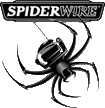Redfish Seminar
Â
Blindcasting
Â
I leave no detail overlooked when blindcasting and sightfishing for redfish. Meticulous preparation and research. I believe this dramatically increases my odds at catching good numbers of redfish.
Â
Areas:
Â
–Â Â Â Â Â Â Â Â Summer/early Fall- Santa Rosa Sound on the north side. Between broken down docks. High tide closer to the bank and on low tide off the bank from the middle to the end of the docks.
–Â Â Â Â Â Â Â Â Southside of sound near Opal Beach and grass flats in the surrounding areas.
–Â Â Â Â Â Â Â Â Big Lagoon- on the south around Redfish Pt. and behind Ft. McRae in the no-motor pond.
–Â Â Â Â Â Â Â Â Late fall/winter- Northern bay systems of Escambia, Blackwater and East. These are the best redfish habitats in our area. Great on low tides.
Â
- Look for large schools of larger mullet which disturb the bottom. Redfish will follow the mullet and look for shrimp and crabs kicked up by these mullet.
Â
Average depths are between 1-3 feet of water.
Â
Approach your area very quietly shutting off your large engine well ahead of your destination. No noise inside boat, turn off baitwell, bottomfinder and secure lose cans and everything that may hit the deck. Walk quietly and off the hatches. The noise is amplified 100x’s underwater and will alert fish within 500 yds of your presence.
Â
Try to set up with the wind and sun. Less bow slap and better ability to see redfish and mullet. Casting with the wind will produce larger casts and, in turn, more redfish.
Â
Top artificial baits including Gulp 5†Jerkshads, Gulp 3’ Shrimp in any color, Zoom 4†Baby Bass, slow rolled Johnson Gold Spoons in 1/8-1/4oz., Mirrodine 17-MR #18 and #21 with green and black backs, sometimes small inline spinnerbaits slowly rolled as well.
Â
Not much action with topwater or hard subsurface plugs. If you do want to use topwater, small Skitterwalks are my choice. Work them slowly(slower than for trout.)
Â
Long 10-20#Â fluorocarbon leaders connected directly to my mainline. I like leaders between 3-4.5 feet long. The farther away from the braid or mono the better. Often times the braid is actually out of the water in shallow water.
Â
Sharp hooks on weedless hooks, jigheads, spoons and other baits. Carry a hook sharpener
Â
Drifting or slowing trolling motoring is the best technique. Casting inside and outside schools of mullet. Also casting to sand holes, sawgrass banks, creek mouths and areas with known mud bottom are great ideas.
Â
Often times these redfish will gather in similar areas and a pattern can be discovered. 20 feet off the bank, points, right on the sawgrass on high tide, 100 feet of the bank on low tides
Â
When a redfish is seen or hooked, deploy your Power-Pole to keep you off a potential school and to effective fight your fish. It is also a great tool to stakeout on a point, creek mouth or proven productive area especially in the wind and heavy current.
Â
Sightfishing
Â
Where I sightfish:
1. Sound, upper bays, East Bay, Blackwater, Escambia Bay. West Bay and Choctawhatchee(Hogtown) are also excellent for traveling anglers. Talk about spring, summer, fall and winter.
Â
Once you have found areas that have lots of redfish, you can get a little more fancy by sightfishing these redfish. Again, quietly and methodically. Take your time. Very slow trolling is fine but pushpoling is the best and most successful method.
Â
Elevation, clear water, good polarized sunglasses, sunlight and accurate casting is the key. Wear light colored clothing, light blue, white, gray. Never orange or red. They can see you!!
Â
Try to key in on leeward or wind protected banks, ponds, etc. The fish are easier to see and redfish tend to like slick and calm banks.
Â
In low conditions and early morning hours, I am looking to disturbance on the water in forms of tailing fish, waking fish and feeding fish. Mullet will also cause disturbance and always cast into mullet. Mullet and redfish tailing and wakes are very different.
Â
In sunny and high light conditions, I am actually looking for fish.
Â
Again, wind and sun to your back. Look as far as possible and try to see the fish before he sees you.
Â
Best baits for sightfishing include Gulp shrimp and crabs, Jerkshad and Baby Bass will also work. Spoons can be difficult. Live shrimp and bull minnows can be used when fish are very difficult to catch.
Â
Place the bait 5-10 feet in the direction the fish is facing and try to get his attention with slow pops, then let the bait sit when the fish move towards the bait. Watch for the vacuum!! Set the hook.
Â
If he refuses, hit him again. If a fish sees you and spooks a bit, let him swim to just out of sight and cast into that direct. Often times the fish maybe heading back to a school of redfish or will regained his comfort level.
Â
Use the Power-Pole to target tailing or groups of redfish so that the wind or current doesn’t have you running over the fish. If you do spook a school of fish, stake down. These fish will return to that location and can be seen from their wakes. Cast into the direction the fish exited and maybe deadstick a Shrimp.
Â
Power-Pole Uses:
Â
- Ability to stop in the wind and current and not run over fish.
- Enables and enhances one’s ability to fight a fish and the other angler throw a bait.
- Enables a slow and method approach to fan casting very productive areas.
- Fantastic tool for wadefishing.
- Other uses include at the boatramp, docking and safety(remote) if you fall out of the boat.







